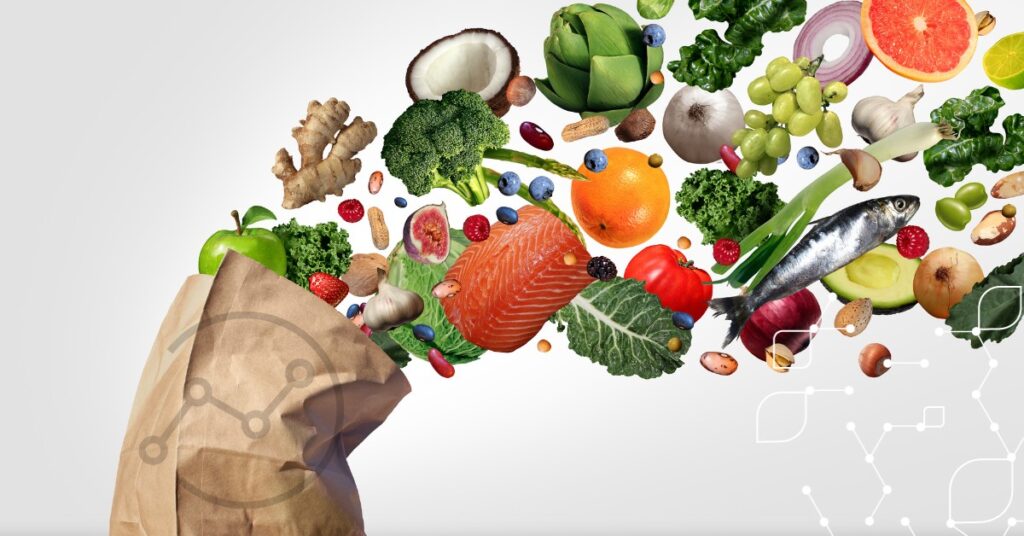
In today’s fast-paced grocery industry, information is a crucial asset that can make the difference between success and failure. Accessing accurate and timely information is essential for making informed decisions and taking appropriate actions. This is particularly true in fresh food inventory management, where having the right information at the right time can help to reduce waste, optimize storage space, and minimize the risk of stockouts.
One of the main challenges in fresh food inventory management is the short shelf life of fresh food products. Unlike non-perishable items, fresh food products have a limited lifespan, and their quality deteriorates rapidly. Therefore, it is essential to ensure that the right employees have access to the right information about the freshness and quantity of the available stock. This includes information about the expiry dates, the temperature conditions of storage, and the product turnover rate.
In this blog, we’ll explore data’s essential role in today’s grocery industry and how new food inventory management software can help retailers effectively use that data to beat their competition.
Entering a New Era of Fresh Food Inventory Management
It’s impossible for any person to keep track of all factors influencing demand, such as weekday variation, seasons, weather, and promotions, as well as all factors influencing replenishment, such as delivery schedules and day-level probabilities of waste and stockouts. As the industry has begun to embrace technology, leveraging a software solution that supports time-dependent data is vital for productivity.
Fresh food inventory management requires retailers to maintain accurate records of inventory levels. This involves tracking the movement of fresh food products in and out of the storage facility and monitoring usage patterns and trends. The right information at the right time can help identify any issues that may impact the inventory levels, such as overstocking, understocking, or inefficient storage practices.
Investing in technology that provides granular and accurate demand planning and automated processes keeps teams productive and better equipped for sudden changes. If teams are aligned functionally, then they are more likely to succeed.
In addition, fresh food inventory management also requires effective communication among the employees responsible for managing the inventory. This includes sharing information about the inventory levels, the quality of the stock, and any issues that may be affecting the availability of fresh food products. Having the right information at the right time can help ensure everyone is on the same page and working towards the same goals.
How do These Tools Help with the Current Workforce, Customer Needs, and Market?
By leveraging available technology, retailers can mobilize their workforce and use their space efficiently by allocating the right personnel at the right time with the right tools.
Technology that is easy to use, easy to navigate, and designed with the employee in mind is critical. This enables quicker training and helps grocers retain employees because they have the right tools to align with their responsibilities.
Customers will see fresher products, stocked shelves when needed, and a variety of available products. Technology assists in ensuring that production processes are done most efficiently. With solutions accessible from a mobile device such as a tablet on the store floor, there is no longer the need to run back to the store desktop computer in the office or run between departments, printing and sharing messy paper sheets.
Data and the Fight Against Food Waste

Because new technology and inventory management software does a great job providing advanced data to their users, grocery retailers are finding that having access to this data is helping them stock shelves more efficiently but also helping to reduce waste and optimize storage space. By monitoring the inventory levels and usage patterns, employees can identify areas where waste occurs, such as overstocking or underutilizing storage space. This information can then be used to adjust the ordering patterns and storage practices, reducing waste and maximizing the use of available storage space.
Optimizing Outdated Fresh Food Inventory Management Processes
Fresh food inventory management is a crucial aspect of the grocery industry, and having the correct information at the right time is essential. Grocery store owners need to have access to real-time data on sales, inventory levels, and customer behavior to make informed decisions. They also need to have accurate forecasting tools to predict future demand and efficient supply chain management to ensure that they receive fresh products on time. With effective inventory management, grocery store owners can reduce waste, improve profitability, and ensure that customers can always access fresh and high-quality products.

![[Read next: "What is a Just in Time Inventory System?"]](https://no-cache.hubspot.com/cta/default/21714346/interactive-149640431181.png)
![[Read next: "Periodic and Perpetual Inventory Systems: Why You Need Both"]](https://no-cache.hubspot.com/cta/default/21714346/interactive-149640431214.png)





